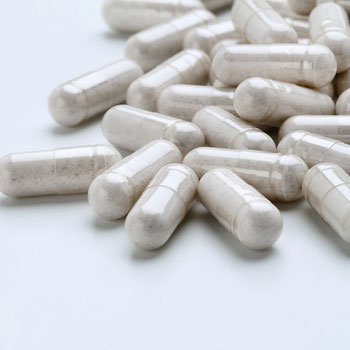Higenamine is a naturally occurring stimulant found in plants such as Aconitum carmichaeli, Aconitum japonicum, Nandina domestica, Nelumbo nucifera, and Sinomenium acutum. It was initially isolated in 1976 from Aconitum, a toxic herb that can cause fatal cardiac poisoning. Today, higenamine can be manufactured (synthesized) as well as extracted from such plants. As a dietary supplement ingredient, it has been marketed in products for weight loss, energy enhancement, and athletic performance. Both natural and synthetic higenamine might promote stimulant effects.
Products containing higenamine are considered “adulterated,” and the safety of higenamine is unknown.
Higenamine is on the DoD Prohibited Dietary Supplement Ingredients list.
The World Anti-Doping Agency (WADA) has prohibited the use of higenamine since 2017. The U.S. Food and Drug Administration (FDA) recently determined higenamine to be a “new dietary ingredient (NDI) for which an NDI notification is required and has not yet been submitted.” Therefore, any product containing higenamine is considered “adulterated.” FDA also points to higenamine’s “potential for serious cardiotoxic effects.”
What does the science say?
Research on the use of higenamine as a drug for the potential treatment of heart disorders (mostly with animals and cells) suggests that it can improve heart function and increase heart rate. The limited and relatively small studies conducted with humans suggest that higenamine, given intravenously, could be useful for emergency cardiac conditions because it can stimulate the heart. Research also suggests higenamine might have anti-inflammatory effects. Side effects reported include dizziness, nausea, headaches, heart palpitations, and chest pain. In the U.S., FDA has never investigated or approved higenamine for use as a drug for any condition.
How the intravenous doses used in studies translate to oral use, such as in dietary supplements, is largely unknown. A single small study showed no significant effects on heart rate, breathing, blood pressure, or blood chemistry—either positive or negative—with oral use of up to 150 mg higenamine for 8 weeks. More and larger studies on oral use are needed, but no safe amount has been established. As a result, it is impossible to know if a dietary supplement containing higenamine is safe.
How much higenamine do dietary supplements have?
Dietary supplement products listing higenamine on their Supplement Facts labels often appear as part of a “proprietary blend,” which makes it impossible to determine from the label the exact amount of the ingredient supposedly present. Other label amounts typically range 10–75 mg in a single serving. However, testing of products has shown that the actual amounts present often do not match the amounts declared on labels, with amounts ranging from less than 0.01% to 200% of the quantity listed. Some products listing higenamine also contain combinations of other stimulants with unknown effects.
Should Service Members avoid the use of supplements with higenamine?
Service Members should avoid products that contain higenamine, as it appears to be unsuitable for use in dietary supplements and is on the DoD Prohibited Dietary Supplement Ingredients list. A number of supplements that once contained higenamine have been reformulated and no longer include it. However, some products tested still contain higenamine, even when it is not listed on product labels. It is important to check for third-party certification seals to ensure what is on the label is actually contained in a product. The safety and effectiveness of higenamine for any marketed claim are unknown. Other common names for higenamine to watch out for include the following:
- norcoclaurine
- demethylcoclaurine
- 1-(4-hydroxybenzyl)-1,2,3,4-tetrahydroisoquinoline-6,7-diol
- isoquinolin-6,7-diol, 1,2,3,4-tetrahydro-1-[4-hydroxybenzyl]
- 6,7-dihydroxy-1-(4-hydroxybenzyl)-1,2,3,4-tetrahydroisoquinoline
Bottom line
Products containing higenamine are prohibited for use by Service Members. They are also considered “adulterated” because it is a new dietary ingredient that hasn’t been submitted to FDA to establish its safety. It is unknown how they might affect your readiness or health.
Updated 07 March 2022

